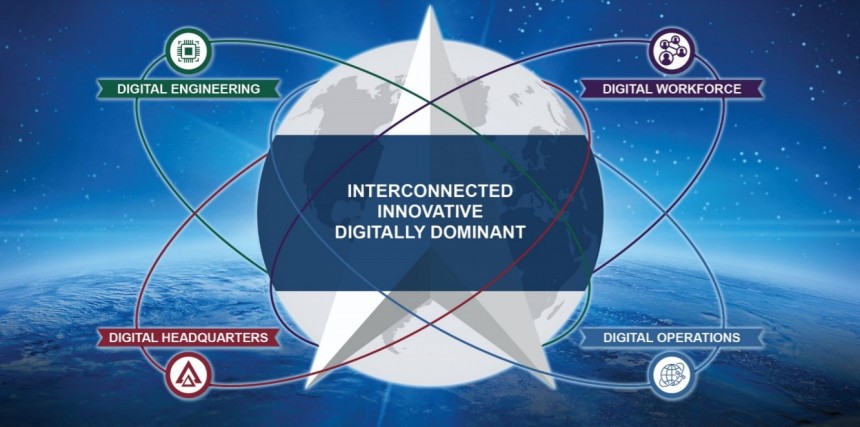The U.S. Space Force (USSF) published its new vision plan on May 6th, outlining its ambition to become the world's first genuinely digital service. While the service's plan is critical, the House Appropriations Committee's defense subcommittee met on May 7th to address the issue of acquisition programs and how the USSF must speed up and deliver on its promises.
In the document released by Space Force last week, it is stated that digital technologies are needed to accelerate its ability to build, field, and operate space capabilities quickly. Confronting the reality of the rising threats with a small group of Guardians (only around 4,800 people) emphasizes the critical importance of digital transformation.
Since its establishment, Space Force has asserted that nations such as Russia and China are hard at work with developing new technologies that would create havoc in space and on Earth (the rocket debris falling back on our planet is the perfect example). These threats also include GPS and communications satellite jamming, anti-satellite weapons, and other cyber technologies.
The document outlines what it means to be a Digital Service, describing the three fundamental tenets required to make the USSF vision a reality. First, in support of the task, interconnectivity would effectively and efficiently communicate critical knowledge with diverse stakeholders.
Secondly, an innovative force embraces new ideas on a regular basis and readily challenges its current situation. And third, a digitally dominant force is dependent on people – creating a motivated, digitally fluent workforce that pushes for creativity. The vision also outlines four fields of digital focus: engineering, workforce, headquarters, and operations.
Although the service announced big plans, on Friday, May 7th, the House Appropriations Committee's defense subcommittee members raised topics that included confronting new and emerging threats, air and space superiority, but also the Space Force's aquisitions problem and its need to change the technology used.
"Space Force in its second year in existence needs to show it can turn things around. More than 80 percent of the Space Force's funding goes toward acquisitions. Just one example is the current missile warning satellite program, which was delivered nine years late and $15 billion over its original estimate," said Rep. Betty McCollum.
According to C4isrnet, in recent years, a $6.2 billion ground infrastructure to command and control GPS satellites has also raised concerns. In 2019, a Government Accountability Office (GAO) report was declaring that the program was already five years behind its original plan. In addition, the Space Force announced in 2020 that it would spend $378 million to replace the system's hardware which delayed the initial project even more.
Gen. John Raymond announced that, in order to answer the problems, the acquisition organizations agencies are being restructured under a new Space Systems Command (SSC), which will help coordinate projects more effectively. However, space acquisitions organizations such as the Space Development Agency and the Space Rapid Capabilities Office, will remain outside of SSC for the time being, and the Space Force has yet to issue a complete list of which capabilities will be transferred in from the other services, notes C4isrnet.
Aside from institutional changes, the Space Force has followed the Air Force in implementing new acquisitions approaches like the Space Enterprise Consortium and other transaction authorities (OTA). The service will use these techniques to execute a fast prototyping and testing.
The service's task areas, such as missile warning, domain awareness, surveillance, and navigation, depend on data and analysis, and the Space Force cannot continue to rely on old technology. Space Force intends to develop a modern structure that will allow it to "capitalize on commercial capabilities."
It also plans to hold an industry day this year to update businesses on a new "force design" that will allow for better commercial technology use. The Space Force will release this summer a "transformational roadmap" that will include more details on how it will implement its vision.
Since its establishment, Space Force has asserted that nations such as Russia and China are hard at work with developing new technologies that would create havoc in space and on Earth (the rocket debris falling back on our planet is the perfect example). These threats also include GPS and communications satellite jamming, anti-satellite weapons, and other cyber technologies.
The document outlines what it means to be a Digital Service, describing the three fundamental tenets required to make the USSF vision a reality. First, in support of the task, interconnectivity would effectively and efficiently communicate critical knowledge with diverse stakeholders.
Secondly, an innovative force embraces new ideas on a regular basis and readily challenges its current situation. And third, a digitally dominant force is dependent on people – creating a motivated, digitally fluent workforce that pushes for creativity. The vision also outlines four fields of digital focus: engineering, workforce, headquarters, and operations.
"Space Force in its second year in existence needs to show it can turn things around. More than 80 percent of the Space Force's funding goes toward acquisitions. Just one example is the current missile warning satellite program, which was delivered nine years late and $15 billion over its original estimate," said Rep. Betty McCollum.
According to C4isrnet, in recent years, a $6.2 billion ground infrastructure to command and control GPS satellites has also raised concerns. In 2019, a Government Accountability Office (GAO) report was declaring that the program was already five years behind its original plan. In addition, the Space Force announced in 2020 that it would spend $378 million to replace the system's hardware which delayed the initial project even more.
Gen. John Raymond announced that, in order to answer the problems, the acquisition organizations agencies are being restructured under a new Space Systems Command (SSC), which will help coordinate projects more effectively. However, space acquisitions organizations such as the Space Development Agency and the Space Rapid Capabilities Office, will remain outside of SSC for the time being, and the Space Force has yet to issue a complete list of which capabilities will be transferred in from the other services, notes C4isrnet.
The service's task areas, such as missile warning, domain awareness, surveillance, and navigation, depend on data and analysis, and the Space Force cannot continue to rely on old technology. Space Force intends to develop a modern structure that will allow it to "capitalize on commercial capabilities."
It also plans to hold an industry day this year to update businesses on a new "force design" that will allow for better commercial technology use. The Space Force will release this summer a "transformational roadmap" that will include more details on how it will implement its vision.





